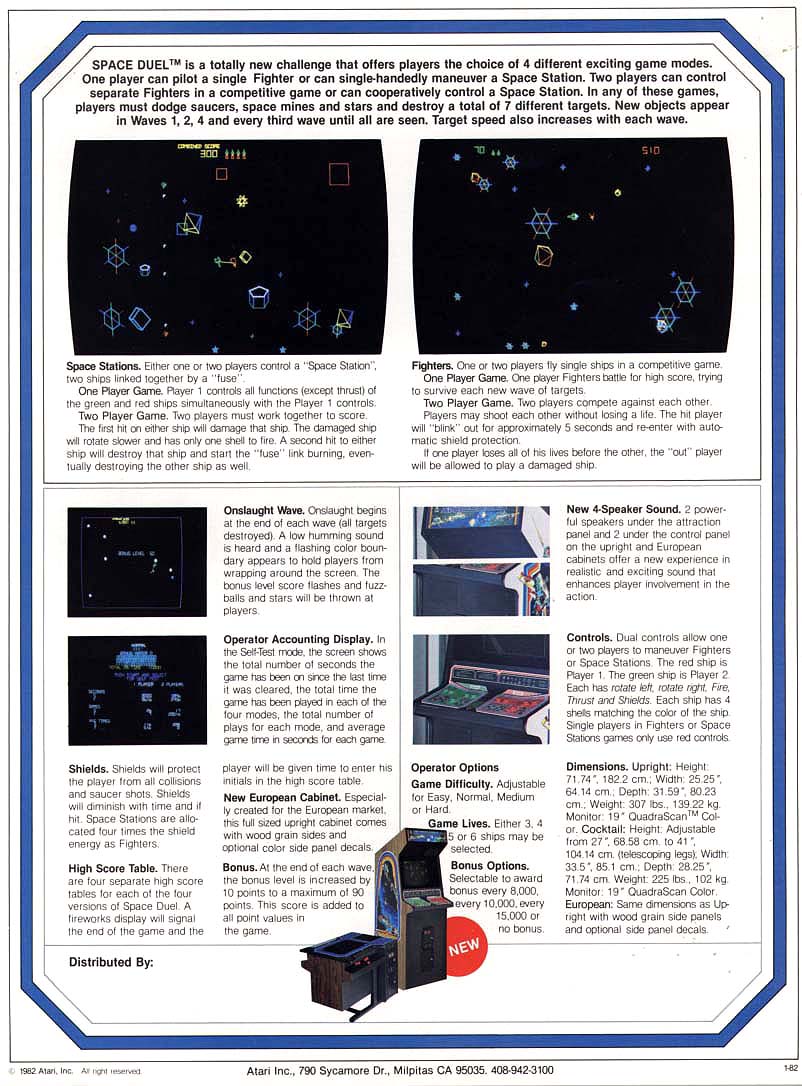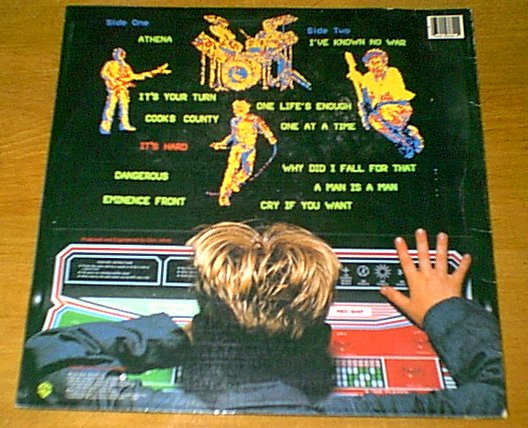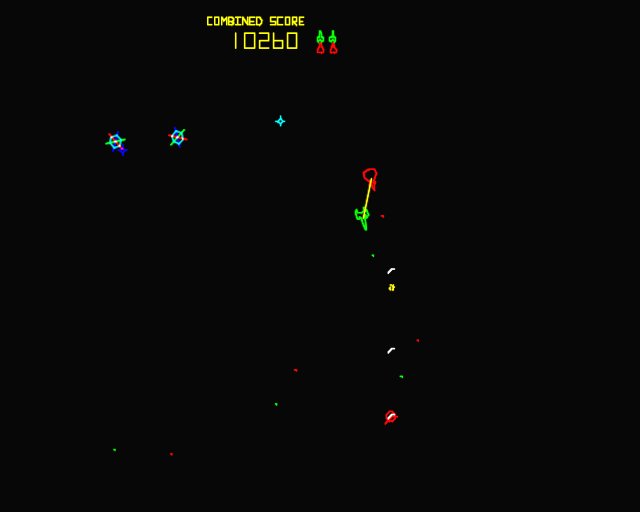

|
Early work done by Rick Mahler 

I was asked about what caused the small flying saucer objects to appear, and how other object in Space Duel were programmed, and if the rocks actually aim at the player. Here is how it worked: (I will call the spinning items in Space Duel "rocks" for this discussion.) In Space Duel, there were several reasons to launch a saucer. If you let too much time pass without hitting anything, a random number would launch either one or two small saucers or the juggler ships (the two saucers that tossed shots back and forth and increased their distance as they wrapped the screen). Also, if an amount of time when only a few rocks remained was hit, they were launched as well. From three to one rock, with fewer rocks making the possibility go up. In addition, longer game play times increased the likelihood of a saucer as well. ALSO, they would be sent out at random after a timer expired in each wave, with the timer getting smaller with each sucessive wave. There may have been other reasons, I cannot recall. The saucers actually calculated a shot which would hit either the player or a rock, with a 50/50 choice early on, and more on the player as time passed. There was a randomness added to the aiming (plus or minus some offset in degrees) which became more and more accurate with total game time. If you sat still, you would eventually get hit. Shot leading, or calculating where an object WOULD be when the shot was fired was also added in, and also became more accurate with time. Thus, long game times would cause shots to be deadly to not only a ship standing still, but one moving in a straight line as well. No lurking at the edges in Space Duel as you could in Asteroids. The small blue + items that were launched DID curve to find you, also getting faster and more accurate with time. The number (from 1 to 7) also went up with total game time. You might note that you can shoot them, they change color, and eventually SEEM to disappear. In reality, they are simply tossed to the edge, and become a bit more "angry", meaning they were more accurate. So, if you kept shooting them, they quickly became more annoying. There were also Stars and fuzzballs. They were launched during the bonus wave usually. The stars are "thrown" at one of the two ships, but do not course correct. When they leave the screen, they warp around as fuzz balls. These do track. Again, the longer the game time, the more they tracked and faster they went. These objects are also tossed out when only 1 rock is left. Lastly, the rocks. There was little smarts in the rocks. The only real smarts was to NOT bring back a ship in the path of a moving rock. And just in case it happened because it moved too fast, the ships are protected for a period of time for "free" as they reenter (they flash!) A rock splits on random vectors. Even the previous direction is mostly ignored, although the rocks split off in a 270 degree split (approx. angle) THEY DO NOT TRACK THE USER! I know people swear that I aimed the rocks and changed their paths. Didn't need to. The only "hidden" attribute is that IF too many objects are on the screen when a rock is hit, it will "POP" and disappear and not split. The game itself made it onto The Who's 1981 "It's Hard" album. Pretty cool, I think :) Click the pictures below to view the album jacket. 
 You can read more about Space Duel at Jess Askey's Space Duel page on Gamearchive.Com. KLOV entry for Space Duel
|  
|